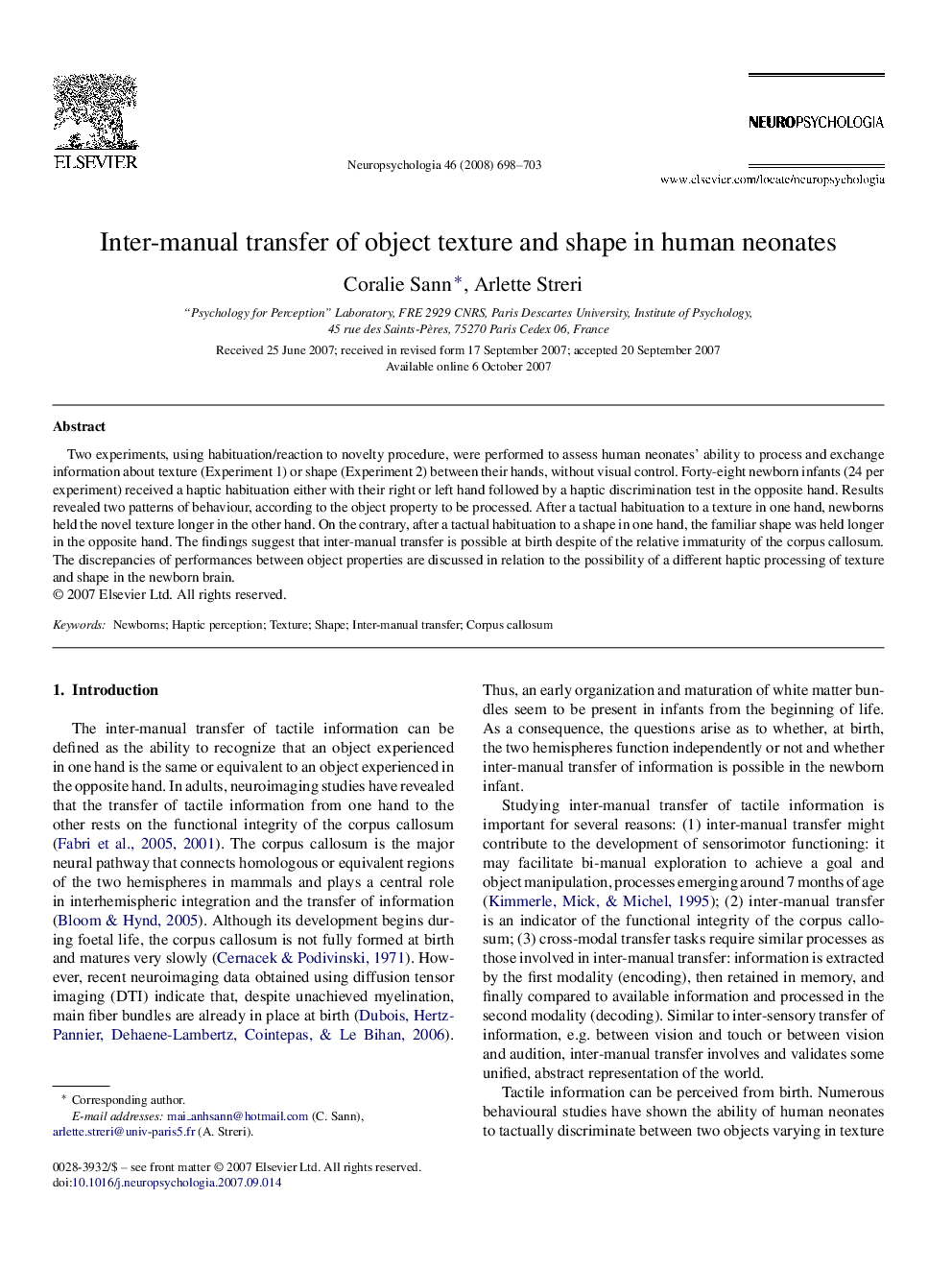| Article ID | Journal | Published Year | Pages | File Type |
|---|---|---|---|---|
| 945300 | Neuropsychologia | 2008 | 6 Pages |
Two experiments, using habituation/reaction to novelty procedure, were performed to assess human neonates’ ability to process and exchange information about texture (Experiment 1) or shape (Experiment 2) between their hands, without visual control. Forty-eight newborn infants (24 per experiment) received a haptic habituation either with their right or left hand followed by a haptic discrimination test in the opposite hand. Results revealed two patterns of behaviour, according to the object property to be processed. After a tactual habituation to a texture in one hand, newborns held the novel texture longer in the other hand. On the contrary, after a tactual habituation to a shape in one hand, the familiar shape was held longer in the opposite hand. The findings suggest that inter-manual transfer is possible at birth despite of the relative immaturity of the corpus callosum. The discrepancies of performances between object properties are discussed in relation to the possibility of a different haptic processing of texture and shape in the newborn brain.
